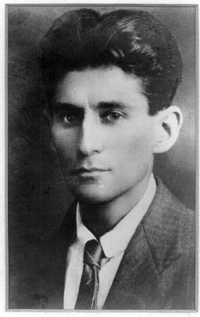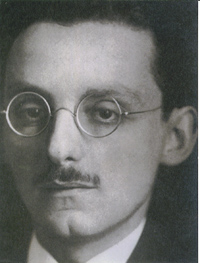By Kathi Diamant

SAN DIEGO — Franz Kafka has gotten quite a bit of play lately. His photo has accompanied headlines in any number of newspapers, magazines, and network news websites in the past couple of months, most of which include one or more of the following words: treasure, trial, nightmare, snarled, tangled, vaults, masterpieces, secret, lost—and, lest we forget—Kafkaesque.
In the past few weeks, CBS News, Time Magazine, Salon, The New York Times, Washington Post, the Guardian, and Haaretz as well as dozens of other news outlets weighed in on the acrimonious fight over Franz Kafka’s papers in the Brod Collection. One of the most thoughtful was by Rodger Kamenetz in the Huffington Post. Coverage on the trial over the Brod Collection in Tel Aviv extends to The National, published daily in Abu Dhabi. Franz Kafka is the Arab world’s favorite Jewish writer. Who knew?
Most of the news reports have been correct, more or less. The AP story by Aaron Heller stated, “Aside from previously unknown versions of Kafka’s work, the trove could give more insight on Kafka’s personal life, including his relationship with his lover, Dora Diamant. It may include papers that Kafka gave to Diamant but were stolen by the German Gestapo from her Berlin apartment in 1933, later obtained by Brod after World War II.”
I am sad to report that the papers stolen by the Gestapo were not recovered by Max Brod after World War II. Since 1996, the Kafka Project at SDSU has led the international search for these papers, 20 notebooks and 35 letters written by Kafka in the last year of his life, which most Kafka experts agree, represent the real missing treasure, not whatever remains in the Brod Collection.
As the Director of the Kafka Project and someone who has followed the story of the Brod Collection closely since 2001, I am happy to share the straight scoop, with links to the best sources, as well as a quick cast list to the Kafkaesque drama unfolding in Tel Aviv:

Franz Kafka (whose literary leavings in the Brod collection are trapped in litigation) was a Jewish-Czech writer who died at the age of 40 in 1924, largely unpublished and unknown. After his death in 1924, with the posthumous publication of his novels, letters and diaries, Kafka rose to international fame as a literary genius, one of the founding fathers of magical realism and the modern novel. He is considered the most influential, profoundly misunderstood writers of our time. His most famous works are two unfinished novels, The Trial and The Castle and the short story, The Metamorphosis.
Kafka’s strange stories have earned their own adjective, Kafkaesque, to describe a world where mindless bureaucracy destroys the mind and body and numbs the soul.

Max Brod, Franz Kafka’s boyhood friend who became his literary executor, was also, like Kafka, a Jewish Czech lawyer and writer. Brod famously defied Kafka’s requests to burn his unpublished work, and instead gathered as much of it as he could and arranged for its publication. “As far as my memory and my strength permit, nothing of all this shall be lost,” he vowed shortly after Kafka’s death.
Brod fled Prague in 1939 for Tel Aviv, where he died in 1968. He escaped on the last train as the German army rolled into Czechoslovakia, taking with him two suitcases, one filled with Kafka’s manuscripts, letters and diaries. During the Six Day War, Brod, concerned for the safety of Kafka’s manuscripts, transferred the most valuable to Switzerland for safekeeping in bank vaults. The Brod Collection is believed to be mostly in ten different safety deposits in Geneva and Tel Aviv, as well as in Ester Hoffe’s humid, cat infested apartment on Spinoza Street.
Without Max Brod, we would know nothing of Franz Kafka. Brod saved Kafka’s writings for humanity, only to leave what he had so carefully collected and saved not to the centers of Kafka scholarship in England and Germany, where his other manuscripts are scrupulously kept, but to his longtime secretary and (most certain) lover, Ester Hoffe, who hoarded them for forty years after Brod’s death, selling off single pages of letters, diaries and whole manuscripts, at random, to the highest bidder. At one point she accepted a very large sum from a German publisher, and then never sent the manuscripts she contractually promised. She never returned the money.
Ester Hoffe, a Holocaust refugee who died two years ago in Tel Aviv at the age of 101, was generally reviled by Kafka scholars and researchers, her name an anathema. Given Brod’s lifelong dedication to establishing and maintaining Kafka’s legacy, his gift of the Kafka papers to his secretary was an unfortunate choice. When she died in 2008, her two daughters, Eva and Ruth, now in their 70s, inherited the collection and decided to sell it to the German Literature Archive in Marbach, Germany, sight unseen, for one million Euros. Headlines rang out around the world: Secret Kafka Treasure to be Revealed!
Kafka aficionados, academics and researchers were thrilled. Priceless, possibly unpublished writings by Kafka would finally be available to shed new light to understanding this most misinterpreted and beloved writer. But then, in classic Kafka fashion, the plot twisted, with no path made easy. The National Library of Israel stepped in, claiming the Brod Collection as state cultural assets, a national treasure, which should not leave the country. The legal wrangling and academic outcry has been ably covered in dozens of articles by Ofer Aderat for Haaretz, which has a financial interest in the case. (Haaretz and many Kafka copyrights are owned by Schocken Books.)
So, for more than two years, the Brod Collection trial has dragged on in a Tel Aviv family courtroom, with drama aplenty, court-ordered openings of secret bank vaults, tales of theft and deception, a nightmare for Hoffe’s daughters, as if straight from Kafka’s own imagination.
When the Brod Collection first made international headlines in the summer of 2008, I was in Poland, on a six-week Kafka Project research project for the 20 notebooks and 35 love letters confiscated from Kafka’s last love, Dora Diamant, by the Gestapo in 1933. Before I embarked on the 2008 Eastern European Research Project, I wrote an article for San Diego Jewish World, “My Quest to Find a Literary Treasure,” explaining what we are searching for, and why it’s so important.
For almost a decade, I have been waiting to see the contents of the Brod Collection. In 2001, in Germany researching the biography of Dora Diamant, I first learned about the Brod Collection, and within it, the existence of 70 letters Dora Diamant wrote to Max Brod between 1924-1952. This was information vital not only for the book I was writing, but also for the Kafka Project. In one letter, written in Berlin in April 1933, Dora described to Brod the theft of Kafka’s writings by the Gestapo. Among the list of 70 letters, a stunning, four-page letter is catalogued, with the date, the return address, and a few lines describing what was taken. But, besides the Swiss lawyer who catalogued the Brod Collection in the early 1980s, no one else has seen that letter or any of Dora Diamant’s letters, telegrams and postcards written over a twenty-five year period.
I am only one of many who are holding a collective breath. The next headline you see on Kafka’s papers in the Brod Collection might announce a happy resolution. But knowing Kafka’s dark sense of humor, I doubt it.
In the meanwhile, Kafka Project isn’t waiting. Plans are afoot to follow up the 2008 Eastern European research, collaborating with the University of Silesia, Jagiellonian University, the National Library of Silesia, and the Polish National Archives in 2012. The Kafka Project is working not only to recover a lost treasure and open a new chapter in literary history, but to repair at least one of the crimes of the Third Reich. If you want to learn more about Kafka, I am presenting a six-week survey, Kafka in Context, for the Osher Institute for Lifelong Learning at SDSU, starting Monday, September 13. To register, contact osher@mail.sdsu.edu. Here’s a link for more information on the SDSU Kafka Project.
Stay tuned for the next headline!
*
Diamant is director of SDSU’s Kafka Project, a journalist, and author.
Sidebar:
For further reading on this case, here are a few of the best articles covering the Brod Collection’s many twists and turns:
Huffington Post: “Kafka Manuscripts: The Fight Over Kafka”
Time Magazine: “Were Lost Kafka Masterpices Stuffed in a Swiss Bank Vault?
Washington Post: “In Israel, a tangled battle over the papers of Franz Kafka”
CBS: “Lost Kafka Papers Resurface, Trapped in Trial” CBS News (AP)
Ha’aretz: story on safety boxes being opened, another on estate executor receiving boxes.
The Guardian: “Lawyers Open Cache of Unpublished Manuscripts”; “The Kafka Legacy: Who owns Jewish Culture?”
-30-